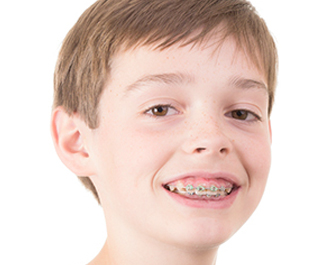An Overview of Orthodontic Appliances
June 1st, 2016
 Orthodontic treatment corrects the alignment of your teeth and jaws so that you can speak clearly, chew food effectively, and look attractive when you smile. This is done by putting sophisticated gadgets in your mouth. While many of these dental devices look similar, Dr. Godwin uses a wide variety of orthodontic appliances to straighten your teeth and repair jaw problems.
Orthodontic treatment corrects the alignment of your teeth and jaws so that you can speak clearly, chew food effectively, and look attractive when you smile. This is done by putting sophisticated gadgets in your mouth. While many of these dental devices look similar, Dr. Godwin uses a wide variety of orthodontic appliances to straighten your teeth and repair jaw problems.
Orthodontic appliances are devices that move your teeth, change the position of your jaw, or hold your teeth in their finished positions after the orthodontist removes your braces. These devices may be attached to your teeth or removable.
Braces straighten your teeth. Options range from traditional metal braces, made of high-grade stainless steel, to ceramic braces made of clear materials that are less visible on your teeth than metal braces. Braces straighten your teeth using brackets and archwires. Spacers are small plastic rings fitted between your back teeth before your braces are placed. These spacers create space between your teeth to optimize the alignment your braces provide.
Retainers hold teeth in their finished position after your braces come off. A Hawley retainer is the most common type of retainer; it features an acrylic plate that rests against the roof of your mouth and a wire crossing in front of your teeth. Essix retainers are quite popular as well, as they are durable and nearly invisible. Some retainers can even be affixed to the lingual, or tongue side, of your teeth.
Bite plates correct a deep bite, where the upper front teeth come down too far over the lower front teeth to cause bite problems. Holding arches prevent the back teeth from moving forward to crowd the front teeth. A lower lingual holding arch prevents your permanent molars from migrating forward. Other holding appliances can maintain space between teeth after you lose baby teeth and before the permanent teeth come in.
A Rapid Palatal Expander (RPE) is an appliance that places pressure on the upper jaw (maxilla) by turning a midline screw. The pressure separates the mid palatal suture making the upper arch wider. It's used to correct crossbites and to create more space for crowded teeth.
Contact our office today to learn more about the orthodontic appliances we use to straighten smiles, and to schedule a complimentary initial evaluation for you or your child.
